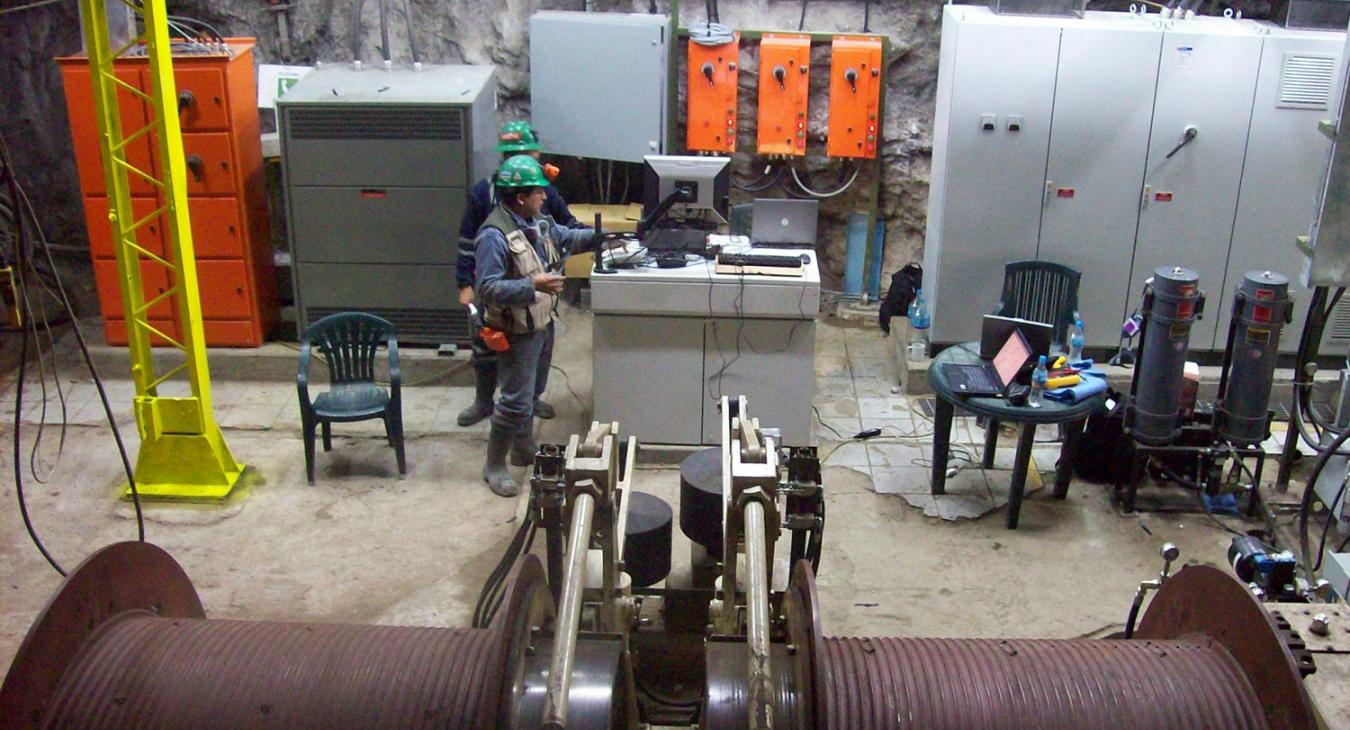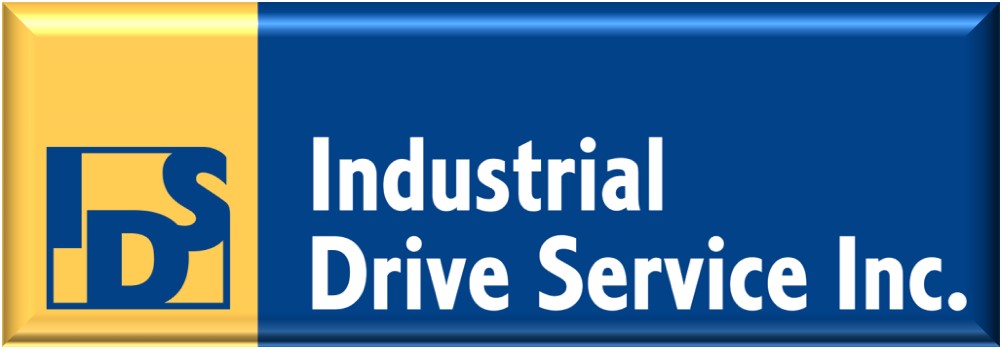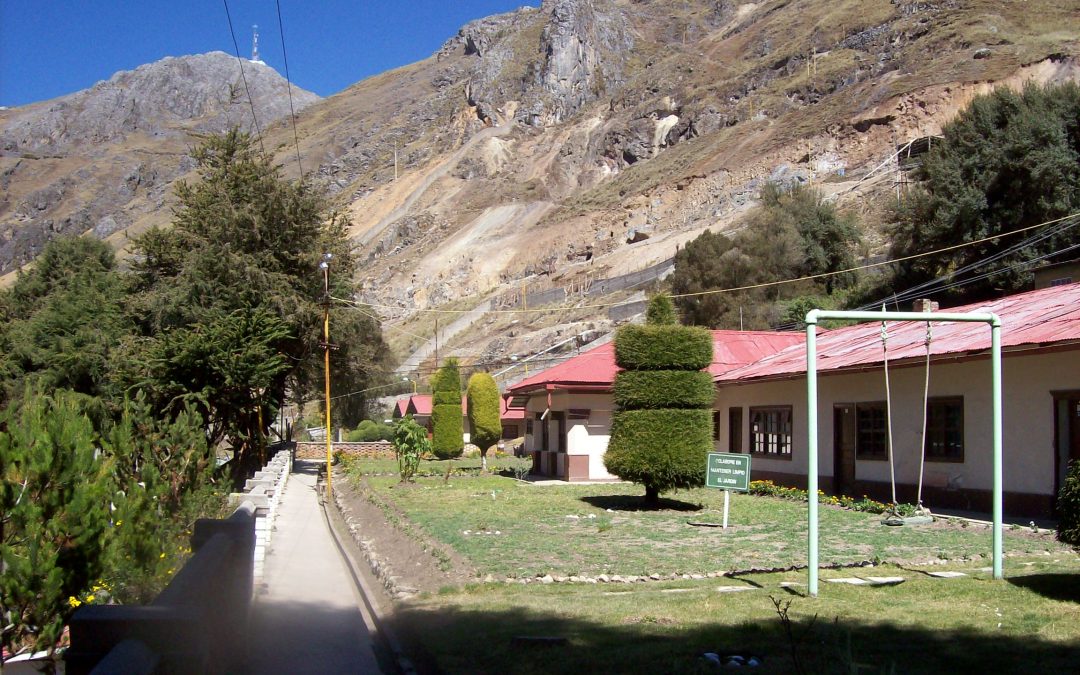
Picture above is a view of the hoist and electrical equipment at the Atacocha mine. Located at 3,800 meters above the sea level. This hoist has a 400HP motor. The equipment is in a room blasted out of the mountain.
Controls are tested in Hensall and the equipment is normally shipped via sea to the Port of Callao in Peru and then taken by truck to the mine. Once the equipment is installed, technicians travel to Peru to set it up and make adjustments. Industrial Drive Service does not involve itself in the safety aspects of the hoist such as the breaking system but normally work alongside consulting engineers who look after this function.
Special consideration needs to be take for cooling the equipment. The air is thinner at high altitudes and does not transfer heat like it does at sea level. Equipment usually needs to be derated. Along with derating current carrying capacity there is a need for voltage derating. Spacing between live components and between relay contacts in higher voltage circuits needs to be greater than at sea level. This is due to fewer molecules in the air and therefore less resistance to electron flow.
The safety standards at the mines in Peru are very similar to Canada. Appropriate personal protection equipment is required and all mine personnel undertake safety training. Peru has its own version of WHMIS. Mine construction is done in a manner similar to that in North America. As in Canada, owners and supervisors can be fined if found responsible for not taking appropriate action to prevent accidents.
Performing work in Peru has a set of challenges that we do not encounter in our usual work locations outside of South America. Peru is a Spanish speaking country. Only more educated individuals speak a limited amount of English. This can lead to considerable frustration when trying to communicate. Generally, our Peruvian clients look forward to the opportunity to practice their English, so from their point of view it is a challenge rather than a frustration.
The mining area where our product is installed is in the Andes Mountains. The typical elevation varies between 3600 and 5000 meters above sea level. The elevation is a problem for both our bodies and for equipment. During the truck ride from Lima (you cannot reach the mine site by place because the shock of altitude could possibly cause death) it is not uncommon to have an upset stomach as you reach higher altitude. The worst headache you will ever experience may well occur and last for several days. Going up a flight of stairs or even bending over to tie a shoe lace can leave you breathless. The first stop on arrival at the mine site is the hospital. They check blood pressure, breathing, blood oxygen concentration and often take a blood sample to determine glucose levels. There is a genuine concern for your health while you are in their charge.
Likely the worst condition of all is the food. The food and accommodations in Lima are very good, comparable to the best found anywhere in the world. Accommodations and food at the mines, however, surely rank with some of the worst. Serving food hot is not a priority. Water boils at a lower temperature at high altitude and therefore a cup of hot coffee is hard to achieve. Very often there is no cell service and Internet may only be available in the office areas. Two or three individuals are routinely placed in accommodations where a five gallon water heater is shared. The person who gets to the shower first has hot water.
Peruvians do not have heating systems in their homes or businesses. Along the coast of Peru the temperature can exceed 30 degrees in the summer and go as low as 15 degrees in the winter. At higher altitudes it is always cold and frequently rains. It is not unusual for the temperature to go below zero and to have snow. Rooms provided to contractors come with a space heater that can heat the room to a bearable temperature. It also has wheels so that it can be pulled to the washroom to lessen the shock when coming out of the shower.
The majority of Peruvians are Roman Catholic. Often the Christian religious beliefs are mixed with aboriginal cultural beliefs and superstitions. At the entrance to the mines there are shrines with the statue of the Virgin Mary. Until recently, it was believed that it was bad luck to allow women to go into the mine.
When asked why a Canadian company would travel to Peru to do work in the mines, the answer is that there are many business opportunities within theses mines. Canadian expertise is very much appreciated and the Peruvian people are very good to work with. They are almost always pleasant and willing to do whatever it takes to get the job done.
Vol. 56 No. 2 – March/April 2014

